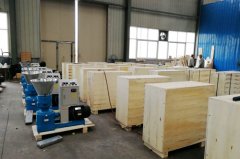Processes of Pellet Mill Manufacture
There are eight key stages in wood pellet mill manufacture, the following are first three process:
Storage
The raw materials are delivered in batches but the pellet production process operates continuously, so a good storage system for the raw material is essential to keep the feedstock clean and dry.
Cleaning
This is particularly important for pellet mill manufacture that use scrap or recycled wood as primary resource, and many pellet factories use screening and magnetic devices to clean up any plastic, large lumps of any kind or any metal that might be lurking in the delivered wood. Since it’s impossible to remove other contaminants (such as heavy metals in treated wood), only clean wood can be recycled as materials for pellet mill.
Drying
Although not all inputs require drying (for example, planer shavings), most do. Raw material with a moisture content of up to 20 percent can be pelletized, however the optimal level is around 12 percent or lower. Drum dryers fuelled either by gas or waste wood are the most common type of equipment used in the pellet mill manufacture process. Drying requires a large amount of energy and thus presents a challenge to the net energy value of wood pellets. The waste wood as a fuel is not only cheaper in the face of rising fossil fuel prices but also improves the green credentials of production, which is important when selling to markets such as Europe that have significant environmental regulations.
After these three steps, comes with grinding, pelletizing, cooling, screening, and distribution. We will take about the details in the next article, so have a break and kills on pellet mill manufacture process continues!




